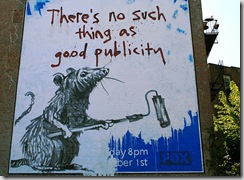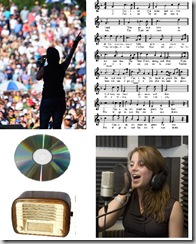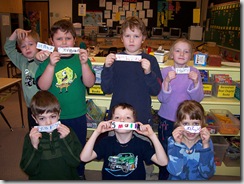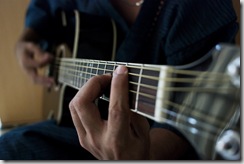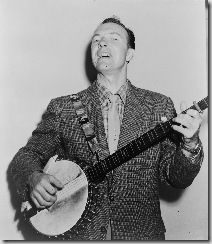You’ve identified what your choir does, found a way of describing it accurately, so now it’s time to let people know about it.
I’ve considered this subject before in Getting the word out which forms part 5 of How to start your own community choir. But in this post, I’m going to look more specifically at the forms that publicity might take and what outlets there are to promote your choir.
different forms of publicity
There are many forms you can use to spread the description of what your choir has to offer. Here are some of them. It’s not an exhaustive list!
written word
This includes press releases, posters, fliers, brochures, beer mats, business cards, advertisements and so on. You will probably already have a written description of what your choir has to offer, so can easily adapt it for each of these different forms. You can also use audience testimonials from people who have seen your concerts before, or – even better – a review by a recognised music critic.
images
For posters, brochures, etc. there also needs to be a design element and suitable choice of images. You can get something off the shelf or see if anyone in the choir has design skills. Sometimes a photo of the choir is useful (especially in the local press), but is not necessarily always the best image for a poster. For my views on photographing choirs see Picture this.
sound recording
Your latest CD, a recording of your last concert, even a rough recording of last night’s rehearsal can all easily convey exactly what your choir sounds like and what kind of repertoire it sings.
video recording
In these days of cheap digital camcorders and YouTube, having a recording of one of your performances or rehearsals is probably the easiest way of summing up what it is that you do.
spoken word
Word of mouth is by far the best way of promoting your choir, but there are also interviews (with your musical director and/ or individual choir members or audience members) which can be used in a number of different ways.
live performance
Maybe obvious, but a live performance is the very best example of a live performance! People can see exactly what it is that they will experience in a full concert.
This can also be extended to live demonstrations (a taster workshop, a free trial for potential choir members, teaching a song to the audience).
different outlets for your publicity
In these days of mobile phones and the internet, there is an increasing number of different outlets for publicity, but don’t overlook the more traditional outlets such as newspapers and magazines. Here are some of the more common outlets. Again, by no means exhaustive.
broadcast media (TV and radio)
There are local BBC radio stations all over the country and they are desperate to have free content to fill the airwaves. They will often give you a phone interview and/ or play a track from your CD or even interview you in the studio. One of my choirs did a live performance in the studio one Christmas!
Local commercial stations tend towards the more populist end of the spectrum, so whether you approach them or not depends on what your repertoire is and what kind of choir you are.
Regional TV is harder to get onto, but you can always try the ‘human interest’ approach. Maybe you’re donating your concert proceeds to a local charity, or one of your choir members has a story to tell.
The BBC website has separate pages for each local station. Most of them have some sort of events section and some of them will also broadcast a what’s on slot. Worth sending them your press release.
brochures (festivals or arts centres)
If you happen to be performing at a festival or arts centre which produces its own brochure (and posters), then you will get excellent coverage for free. Make sure you get the information (and images) to them in plenty of time in the format they need and with the correct word count.
Even if you’re not actually performing at your local arts centre or festival, they often offer a service whereby you can piggy-back their brochure distribution by putting a single item in the envelope with the brochure when they do a mailshot. It’s cheaper than posting them yourself and it will also get to more people than your own mailing list.
newspapers
Local newspapers will almost always list your concert in their what’s on or community section, but that might just be a couple of lines amongst many other events on the same day. Much better to try to get some editorial space.
Again, like other local media, you’ll need an angle (not just another concert!), preferably one with human interest. Local papers usually like to send their own photographers so you won’t get a chance to use that carefully chosen choir photo that you spent so much time on. Their photographers only work office hours and weekdays so won’t come to one of your evening rehearsals.
All local papers will have a website. You can get listed in their what’s on section, but more importantly that’s where you can find full contact details and names of reporters. Try to develop a personal relationship with one of them. Phone calls are better than email for doing this. Find out who on the staff might like the kind of music you do.
It’s very, very unlikely that you will get national press coverage, but if you think you have an unusual and interesting enough angle, then give it a go. Again, make sure your contact is targeted, don’t just send it to the general news desk.
Make sure you get your information in to the paper in plenty of time. If it’s a weekly local paper, then make sure you know which day it comes out. Send your stuff in with at least a week for them to publish. There’s a fine balance between getting the word out too early (so people forget) and leaving it too late (when they’ve booked up to do something else).
Keep a file of all press contacts, names, addresses (real and email), website address, publication dates, etc. etc. Keep it up to date as personnel change frequently.
magazines
Magazines are like newspapers only they have a much, much longer lead-in period. Find out when they come out and when they go to press. You’ll need to keep a forward planning diary to make sure you hit their deadlines (which are often published in the magazine the month before). It’s easy to forget that the information about your Christmas concert needs to be submitted in August for those quarterly magazines that come out in October.
It’s very,very hard to get a review of a concert which has only one performance. Newspapers and magazines will only tend to review something that will still be on after the review is published. But still worth a try.
advertising
So far I’ve only considered outlets which are free. The one big advantage is that they don’t cost money, but the big downside is that there is no guarantee that you will get in, or if you do, they might mangle your press release and miss out vital information.
One way to guarantee inclusion in newspapers and magazines is to pay for an advert. This can range from a small black and white ad in the classifieds, to a full-colour, full-page ad in the magazine section.
The big plus is that you will definitely get published – at a price. Make very, very sure that you’ve checked everything for typos and accuracy before submitting, make sure you agree a price beforehand and check what format they need the final copy in.
websites and blogs
Obviously you’ll put your concert information on your own website (you do have one, don’t you??!!), and make sure it’s kept up to date, but there are also hundreds of listings and what’s on sites on the internet. Some are nationwide, and some are local. They all have different requirements so you’ll need to adapt your basic publicity information to fit a whole range of word counts. Don’t forget time, date and how people can get tickets.
Many newspapers allow online submission for events via their website. There is usually a form to fill in. Make time to investigate all relevant websites and bookmark them so you can update them all in one sitting.
Put it on your choir’s blog if you have one, or find out if any choir members have a blog.
online social media
This is the age of Facebook, YouTube, Twitter and so on. If you have the time (and know-how), set up a Facebook page for your choir, a YouTube channel (for all your videos) and a Twitter account, and any other social media you can think of. Regularly update your followers and fans. Keep them in the loop and offer them special previews or deals. Make them feel special!
Make sure that it’s easy and obvious via your website how to connect with you on these other sites. Put it in your choir email signature, on your choir business card (you do have one, don’t you?), and any other place you can think of.
public spaces
The place for fliers and posters. Before you print hundreds of A5 fliers, make sure you know where they’re going to go, if it’s allowed (always ask permission in bars, cafes, etc.), and whether it’s worthwhile (you don’t want to come back after the concert and find that there are still piles of flier sitting there!).
Before you print loads of posters, figure out exactly where they’re going to go. It’s no good getting 500 printed if you only have 20 outlets. Don’t get A2 posters printed if you only have small notice boards available that will only take A4 posters.
Can you pay to have the local leaflet people display your fliers or put them through people’s letter boxes? Is it cost-effective?
As long as your local council or shopping centre doesn’t object (ask them first) you can do impromptu performances in public spaces. Make sure someone is there who is not singing who can hand out leaflets and field enquiries. Maybe get a big self-standing board made so you can advertise clearly the name of your choir and concert details. Maybe have some CDs to sell!
other people’s concerts
Offer to be a support at someone else’s concert – for free. Go to the top. Ask the big guns. You’d be surprised how many big names will go for it if they’re doing a local concert near you. If you don’t ask, you don’t get!
Make the offer clear: “we’ll do two songs, it will take six minutes and we think it will complement what you plan to do in the second half.”
Offer your services to the local cinema. There was a French film a while back called “The Chorus”. Offer to do a few live songs before the film starts. Choose an appropriate film!
Contact the local schools and offer to do a joint concert. Or other local choirs.
mailing lists
You should always be developing your mailing list. Collect names and email addresses (cheaper than snail mail postage) at concerts, workshops, outdoor performances, on your website, etc. Do a mailshot in plenty of time before your concert. Don’t use exactly the same wording as on your website (or Facebook page or Tweets). People get bored very easily and fed up if they keep hearing the same refrain. Vary it and keep it spiced up.
If you only have snail mail addresses, think about posting fliers. Or if you can’t afford it, rope the choir in to hand deliver stuff. Always put a note in for people to let you know if they have an email address, it’s cheaper.
the telephone
Finally, a bit old-fashioned, but there’s nothing like the personal touch. If you have phone numbers on your mailing list, then why not recruit some choir members and choose a random group of people to phone and plug your concert to. Hopefully it will have a ripple effect. Make people think they are special by making it personal. And if they can’t/ won’t come, then it’s a perfect opportunity to get some feedback.
And since we live in the modern world: don’t forget texting.
it’s all too much!
There’s a lot here I know. And I’m sure I’ve left some things out!
I’m not suggesting you do all of these things, but I hope I’ve given you a glimpse into the many forms and outlets that your publicity can use. There are plenty of resources out there to help you write the perfect press release, maximise your social media presence, design the ideal poster, hunt down your local newspapers.
A lot of it is trial and error. For instance, I found at that for some reason more people came to our concerts who saw it in the local free paper rather than the paid-for evening news. Also, there aren’t that many suitable places to put fliers out locally, so printing hundreds is a waste of money.
Change your strategy and learn as you go along. If you decide to pay form something (a designer, and advert, a flier distributor), then make sure it’s cost-effective. If it’s not, stop it.
So why not get started ... now!
And you have to keep it up. It’s no good putting a huge effort into your next concert, then letting up. You have to develop, extend and push.
other methods
Next week I’ll be looking at alternative strategies for getting a bigger and better audience for your concert: 20 ways to increase your concert audience.
But in the meantime, do drop by, leave a comment, and give us the benefit of your own ideas and wisdom. Is there anything I’ve left out? What works (or doesn’t work) well for you?

